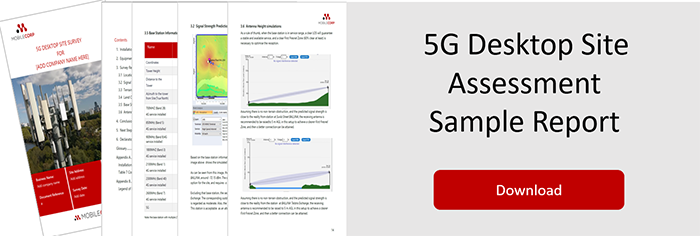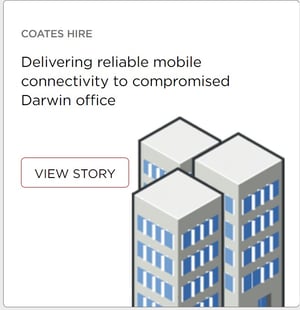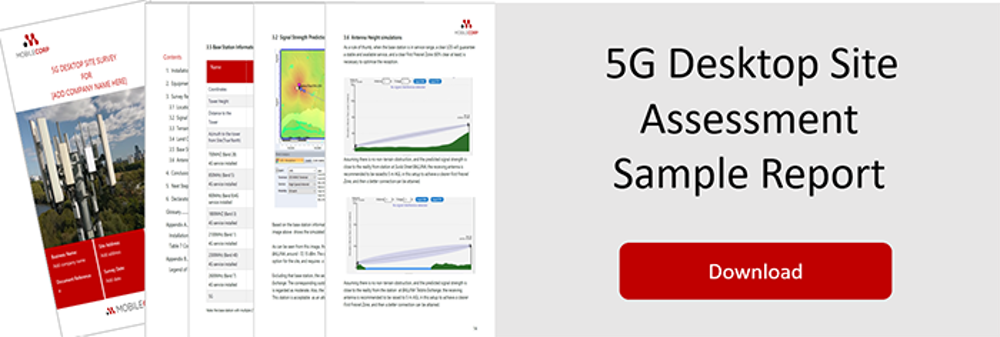Experiencing unreliable reception on your mobile phone? Wondering where your nearest cell tower is and how to improve your signal?
5G small cell base stations have been popping up all over our cities and towns. Along every major thoroughfare, sitting atop the highest geographical points, and tacked onto the sides of buildings and lamp posts, the small cell units are multiplying at breakneck pace.
So surely you should be getting more stable reception and faster speeds, right?
Understanding where your nearest cell tower is located can provide some insight into why you may have unreliable reception, and also provide some ideas for how to improve your signal.
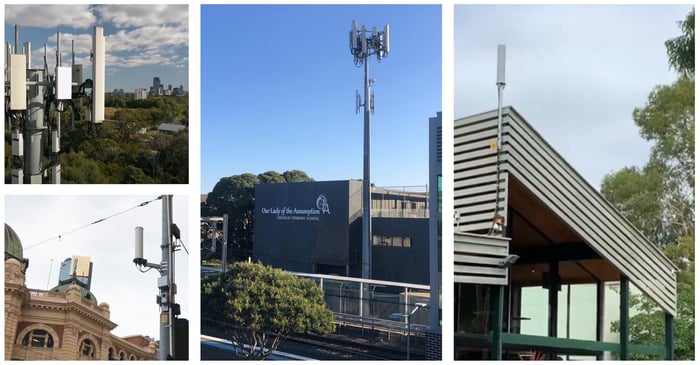 5G reception Australia
5G reception Australia
How to find your nearest mobile cell tower?
The simplest way to find your nearest mobile cell tower is to go to the Radio Frequency National Site Archive (RFNSA) website.
The website is managed by the Australian Mobile Telecommunications Association on behalf of the Mobile Carriers Forum. The Forum is made up of the three mobile phone carriers who are deploying mobile networks in Australia - Telstra, Optus and TPG Telecom.
The RFNSA website plots the location of all mobile cell towers in Australia, providing a unique numerical identifier, GPS coordinates, carrier owner, signal type, height above sea level - and the distance from the search address.
On the RFNSA website, a search can be made using a Keyword or a Near To Address parameter.
As an example, MobileCorp's head office is located at 247 Coward Street, Mascot. The RFNSA website shows multiple towers surrounding the MobileCorp address. The tower highlighted in the image below is Tower #2020010, and is located at Mascot Railway Station, which is 226 metres from the MobileCorp office location.
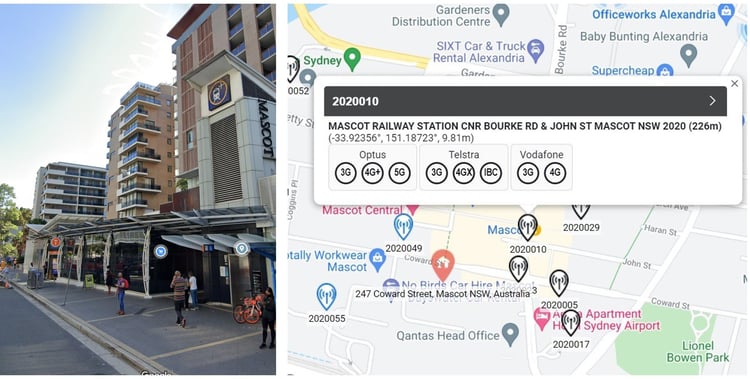
The GPS coordinates are listed and the height of the tower antenna is 9.81 metres above sea level.
It is a shared tower with all three carriers utilising the infrastructure. The frequencies for each carrier are listed from 3G through to Telstra's In Building Coverage solution.
Why mobile reception at your location may be compromised?
There are multiple reasons why the mobile signal at a particular location can be unreliable. Some of these include:
- Distance from the nearest tower: Most obviously, you must be in range of a tower and that range can vary depending on the transmission power of the tower or base unit. A 5G small cell may only have transmission power or reach of 200 metres. A 4G tower will have a reach of several kilometres.
- Network Congestion: When too many users are trying to access the tower, quality will be diminished and calls will be dropped, as towers have a finite amount of capacity. This is known as not having enough bandwidth. Carriers can increase the capacity of a tower by purchasing greater frequency spectrum or by limiting the number of users they sell access to.
- Transmission Power: This might be the issue when users have five bars showing on their phone but the calls still drop. The transmission power of the tower is always far greater than the transmission power of your phone. Mobile phones have low-power transmitters in them. When the phone transmission is low you may be able to receive but be unable to transmit effectively leading to drop outs or poor call quality.
- Environmental Factors: We will all have experienced this at some time with our televisions and it is the same for our mobile phones. It is very common to lose mobile signal in a lightening storm or even heavy rain. Atmospheric conditions, cloud cover and wind direction can all affect reception, as can bushfire smoke.
- Line of Sight Barriers: Geography directly affects coverage. A signal that has a direct line of sight between the cell tower and the device will be stronger than a signal obstructed by hills, buildings, and even trees. Radio signals repeatedly bouncing off obstacles create a multipath, decreasing mobile coverage. Sometimes parts of a vehicle, such as a roof and pillars, may cause phones to dropout more inside your car than when you’re standing outside.
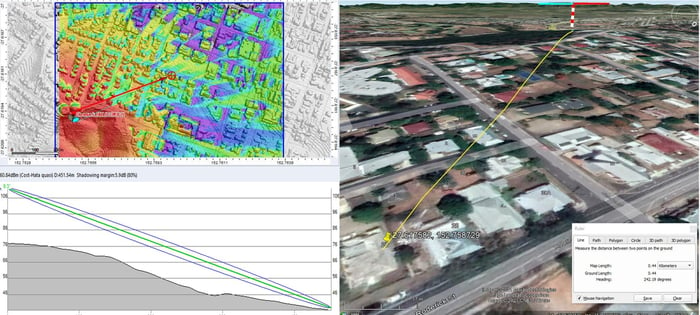 Line of Sight Testing, Denmark Hill, Ipswich QLD
Line of Sight Testing, Denmark Hill, Ipswich QLD- Antenna Efficiency. All mobile phones have an antenna in them to receive signal but in this case we are referring to an antenna being used by a business to improve signal to a device like a router at a site. The efficiency of an antenna relates to the power delivered to the antenna and the power radiated or dissipated within the antenna. A high efficiency antenna has most of the power present at the antenna's input radiated away; whereas, a low efficiency antenna has most of the power absorbed as losses within the antenna or reflected away due to impedance mismatch. The higher the percentage of the efficiency the better the antenna is. Adding an antenna to a building or vehicle is a common means of improving signal reception.
- Antenna Gain. Antenna gain measures the transmission power in the direction of peak radiation to that of an isotropic source. An antenna with a gain of 3 dBi means that the power received far from the antenna will be 3 dBi higher (twice as much) than what would be received from a lossless isotropic antenna with the same input power. The higher the dBi the better the antenna is. And if that sounds far too technical, think of it as when the power coming out of an equipment is greater than the power coming into the equipment, it is said to have a gain in power. The amount of gain is measured in decibels.

12 tips to improve mobile reception at your business site
1: IDENTIFY THE NEAREST CELL TOWER.
How far are you from the nearest cell tower? MobileCorp provides a Site Feasibility report by certified radio engineers to provide detailed information about the signal at a specific location for a standard fee of A$350. It will highlight barriers to signal strength and recommend a solution.
As an individual user you can also use Ookla to do a speed test on your device, you can download an App that will help identify the mobile towers in your area and provide information about the signal strength or network outages. These include AusPhoneTower and OpenSignal. Or your can utilise the RFNSA website.
2. INSTALL A MOBILE SIGNAL BOOSTER AND ANTENNA
It can be common to experience poor reception in one area of a premise or business site - maybe a warehouse, a garage, a showroom, or even just the back office.
There are a number of basic tips that can be tried to improve mobile signal, however for enterprise and business the most reliable answer is likely to be installing a mobile network signal booster.
Network coverage extension devices amplify the network signal that the mobile device receives, which extends the area the device can work in. MobileCorp provides a mobile reception diagnostic service and supplies, installs, and tests network booster devices.
3. DON'T MOVE AROUND WHEN USING VOICE OR DATA ON YOUR PHONE.
When you move around, the phone and network constantly adjust to your changing location. The movement makes it harder to find and hold onto strong signals.
4. MOVE AWAY FROM OBSTRUCTIONS.
As buildings and structures block the mobile signal, going outside could improve reception. If you are outside, an open area like a park will make it easier for the network signal to reach you.
5: KEEP YOUR BATTERY CHARGED AT LEAST 25%.
A phone needs enough power to fully utilise the available signal. If your battery is low, there might not be enough power for the phone to acquire and hold the signal.
6: CHANGE YOUR LOCATION WITHIN THE BUILDING.
The mobile signal will be different in different parts of the same building. Moving to another part of the office or home could give you better reception. Try the reception at different windows, as a window will not block the signal as much as a wall would. An open window would be best if weather permits.
7: MOVE TO A HIGHER POSITION.
A higher position either within your building or on a hill outside, will reduce the chance of obstructions blocking your mobile signal. Finding the highest point in your immediate surroundings and moving there may improve reception dramatically.
8: USE WIFI CALLING.
All smartphones allow for WiFi calling and texting these days, and all major networks in Australia support this. There are many messaging apps available that will enable you to do audio and video calling. If the mobile reception at your location is weak and you have access to reliable WiFi signal from your home or office, switching to WiFi may solve your problem.
9: TRY SWITCHING BETWEEN 3G, 4G AND 5G.
Your mobile phone auto-selects the network type. During busy times, changing the network selection to older network types of 3G and 4G may improve call quality due to lower levels of bandwidth contention.
10. UPGRADE YOUR PHONE
All the newest handsets are 5G compatible. the Telstra 5G network is now accessible by 80% of the population. Having a device that can access 3G, 4G and 5G frequencies gives you a greater chance of securing a more reliable reception.
11. REMOVE YOUR PHONE'S PROTECTIVE CASE.
If you have a case on your phone, removing it may improve the signal. A case could block the network signal and prevent it from reaching the phone's internal antenna.
12. DON'T BLOCK THE INTERNAL ANTENNA WITH YOUR HAND.
Most phones now on the market use internal antennas. It is possible to block the signal depending on how you hold the phone, so be aware of your hand's position on the phone while using it. Remember Steve Jobs ... you're holding it wrong!
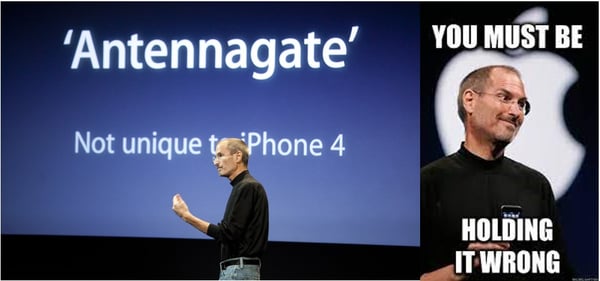
About MobileCorp
MobileCorp is an Australian communications technology company providing 5G Networks, Managed Mobility Services, Complex Data and IP Networks, and Unified Communication solutions. We have a proven track record providing solution architecture, build, deployment, and managed services for Australian enterprise and business.
5G Michelle Lewis 20 Feb 2022
Related Posts
Popular Tags
- Mobile Devices (81)
- Mobility (81)
- Telstra (66)
- 5G (64)
- MobileCorp Managed Services (55)
- Mobile Network (36)
- Networks (34)
- Cradlepoint (32)
- Apple (29)
- MobileCorp (29)
- iPhone (25)
- Remote Working (23)
- Network (17)
- Covid-19 (16)
- Mobile Security (15)
- Wireless WAN (15)
- Cyber Security (14)
- UEM (14)
- MDM (11)
- Mobile Expense Management (10)
- Mobile Device Management (9)
- TEMs (9)
- Mobile Device Lifecycle (8)
- Cloud (7)
- Unified Comms (7)
- Unified Communications (7)
- Wandera (7)
- Android (6)
- Sustainability (6)
- Data Networks (5)
- Network Security (5)
- Samsung (5)
- Security (5)
- Digital Experience (4)
- IOT (4)
- Microsoft Intune (4)
- Blog (3)
- IT Services (3)
- Microsoft (3)
- Data (2)
- Government (2)
- Microsoft 365 & Teams (2)
- Retail (2)
- nbn (2)
- webinar (2)
- 4G (1)
- DAS (1)
- EMM (1)
- Emerging Technologies (1)
- Hosted Telephony (1)
- Managed Desktops (1)
- SD-WAN (1)
- Starlink (1)
- Telstra Services (1)
- WWAN (1)
- video (1)



